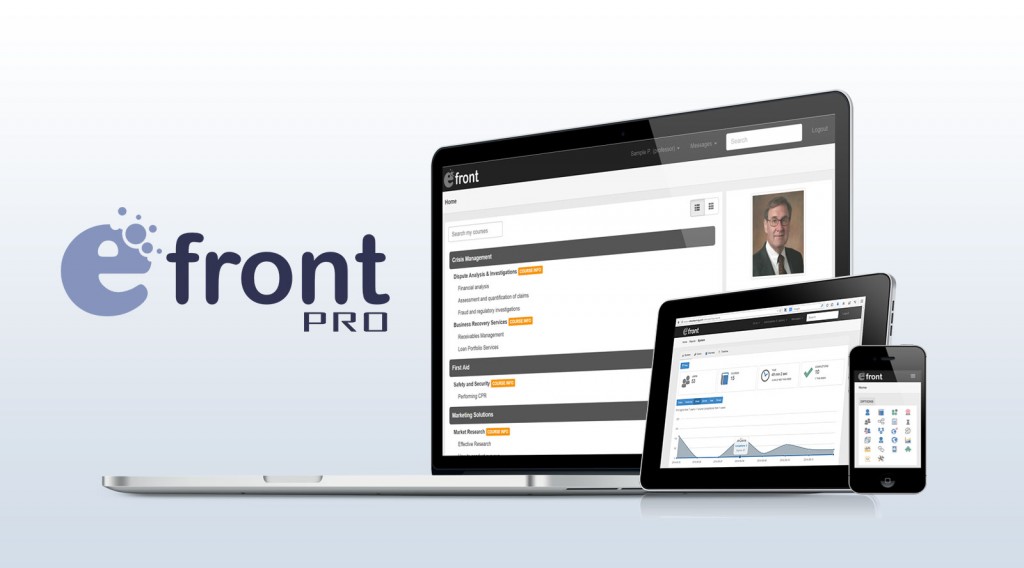
Evaluating the success of your students and courses is something between a science and an art.
The art part is the kind of inexact heuristic that comes from experience, and you’ll get it after you deal with your first batches of learners.
The science part is, of course, all about measuring. And for that eFront has you covered.
There’s a fancy term for measuring things in enterprise software that we have also adopted; it’s “reporting”.
The name probably comes from the days when enterprises printed their weekly, monthly and annual earnings reports with those new fangled computer things, but what it describes is quite simple.
Reporting is just gathering and displaying information about a particular subject.
In particular, reports in eFront are visualizations of interesting data regarding the system, the courses and the users.
Reports are specifically good at revealing general trends and at spotting irregularities, which are the two most important things you should know about your e-learning service.
A general trend for example would be a steady uptick in student enrollments as a course becomes more popular.
An irregularity on the other hand would be something like too many students failing a course.
Both examples are the kind of actionable information that will help you improve your classes.
In the first case for example, you could consider investing more on this suddenly popular class and perhaps offer similar ones.
On the second case you could re-examine the course’s material and/or discuss the situation with its instructor.
This is the intended, and best, way of using the reports facility, not just as visual eye candy, as many do, but as a way to get actionable insight about your e-learning business.
The default view, “System”, displays an overview of “events” and activity that occurred in the the current day. As with any report, you can adjust the reporting period to yesterday, week, month and year or set a custom date range.
To help you get started, eFront, comes with a variety of pre-defined reports already built-in. You’ll find them in the (imaginatively named) Reports section.
eFront splits reports into 4 general categories: System (which we already mentioned), Users, Courses and Tests, with each providing insight on its specific subject. There’s one more section, called “Timeline” which we’ll cover later.
eFront comes with a variety of pre-defined reports. Upon entering the Reports section, in the “Systems” tab you’ll see an overview of “events” and activity for the current day. You can adjust the reference period to yesterday, week, month and year or set a custom date range.
You can of course create your own reports by filtering eFront’s database for the information you need.
You can see data, for example, by User Type, Group, Job, Skill, Audience, Branch, recent activity, or any combination of the above. This is were eFront’s powerful organization and categorization tools (like Groups, Audiences, Skills etc) come in handy, as they enable to narrow down the report to just the items you need (from a general overview, down to a single specific user, course or test).
The Reports page is divided into two panels, with the top one showing a few key indicators (that change depending on the subject, e.g. for Users those are: number of learners and instructors, course completions, time spend on site, and latest activity), and the bottom one showing a detailed listing of relevant information (e.g. courses taken, status, score, etc).
The final section in the Reports page is called Timeline, and this gives you a full historical listing of any action in your LMS platform (users logging in or out, students completing a course, a conference starting, etc). You can filter this down to only see the events you are interested in.
You might notice a lack of flashy plotting options that some other software might offer. That’s not because we couldn’t add it in, but because it’s basically useless eye candy, which not only doesn’t help you get to the information quicker, but actually misrepresents the data.
Even the ever popular pie-chart, for example, is considered a bad visualization by statistics experts. In eFront we stuck to what works and what can give you the relevant information at a glance.
And with that, we covered most of what you need to know about reports in eFront. There’s plenty more to discover once you start using the product, but this should be enough to get you started.
Stay tuned for more tips, hints, e-learning rants and eFront insights.